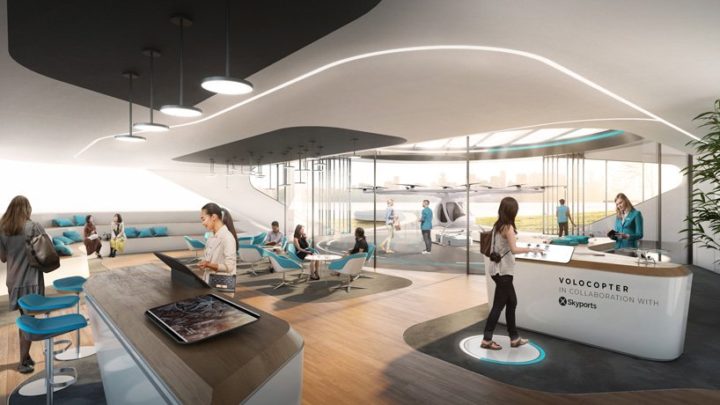Candidates, Why go through a recruitment agency ?
1/ Your chances of finding a job are multiplied If you respond to a job offer published by a recruitment agency, your application will not…
The German startup Volocopter has chosen Singapore as the launching point for its first air taxi port. Trials, in public flights, will be scheduled for the end of the year. The Berlin studio Graft is responsible for the design of these “taxi-ports”
Volocopter began developing its fully electronic take-off vehicle in 2011 with the goal of providing an alternative means of transportation in urban areas. In the same year, he completed his first manned test flight and in 2017, he presented the first-ever autonomous flight of an urban air taxi in Dubai.
This plane is a two-seater without combustion engine, fuel, and most importantly, it does not emit any CO2. It is thanks to its 18 silent electric rotors that it moves in the space, all controlled by a unique joystick.
The Graft studio won the tender for the “volo-port” design alongside the internationally renowned Brandlab. The architects have developed a modular design that facilitates the integration of these flying ports into existing urban infrastructure.

“Mobility patterns in cities around the world are changing rapidly, seamless transitions from one mode to another are critical to efficient transportation and changing passenger demand,” said co-founder and co-founder Linda Stannieder. Brandlab CEO.
“Our architecture design, along with the services along the customer journey, connects the ground-air infrastructure in the most fluid way possible.”
Designed to offer passengers a flawless air taxi experience, the “volo-port” includes a lounge, security zones and departure areas in a relatively small, single-story structure. In the shelter of the weather, passengers can get off the air taxi or be transported to a nearby heliport for a longer trip.

“Each volvo port is designed to be standalone or connect to other ports in many configurations, allowing for rapid deployment and real scalability,” says Linda Stannieder.


The Graft studio plans to graft these mobile ports to unused railway stations, airports and roofs. These ports could also be floating on rivers or water surfaces.